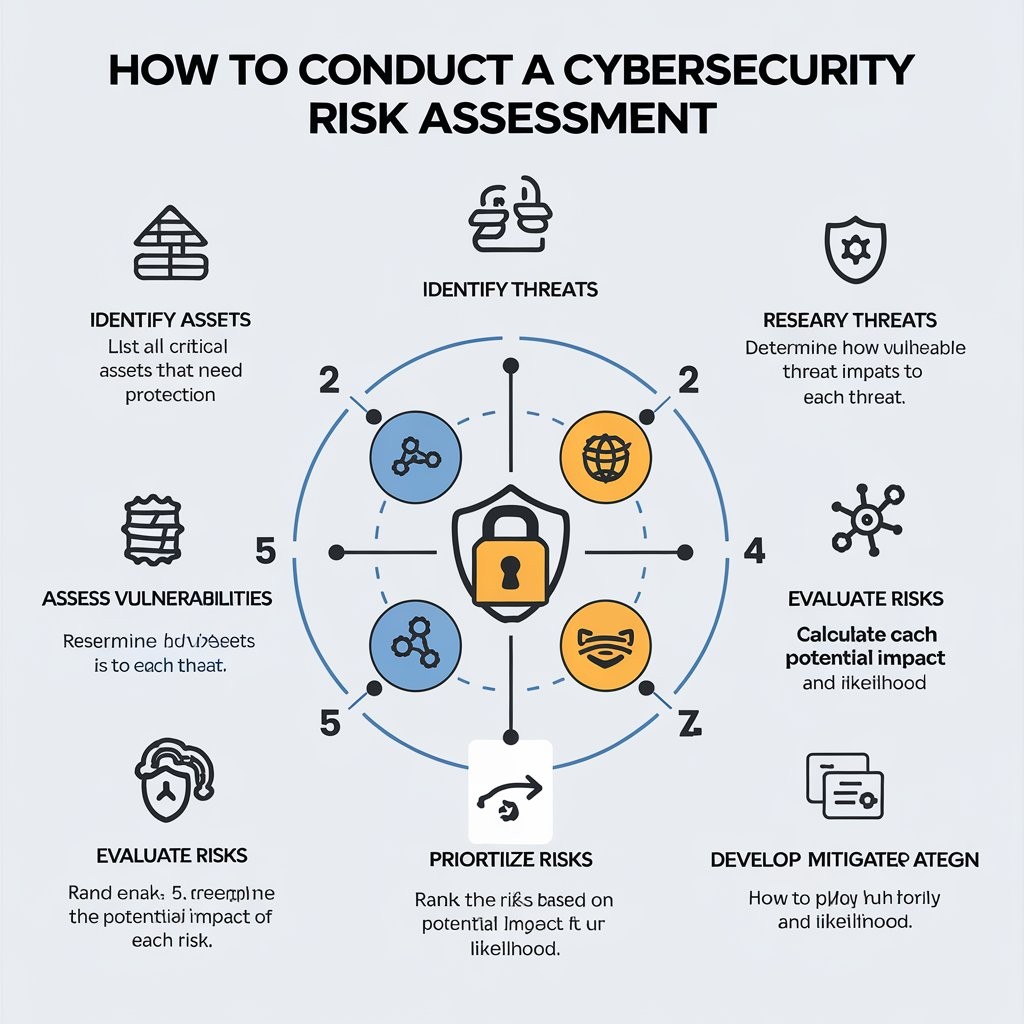UA
5 Min Read
This post will guide you through the essential steps of conducting a cybersecurity risk assessment, empowering you to strengthen your security posture and protect your valuable assets.
Why Conduct a Cybersecurity Risk Assessment?
Before diving into the "how," let's understand the "why." A risk assessment offers numerous benefits:
Identifies Vulnerabilities: Uncovers weaknesses in your systems, applications, and processes that could be exploited by attackers.
Prioritizes Risks: Helps you focus on the most critical risks that could have the biggest impact on your business.
Guides Security Investments: Provides a basis for making informed decisions about security investments and resource allocation.
Improves Security Posture: Enables you to implement appropriate security controls and mitigate potential threats.
Ensures Compliance: Helps you meet regulatory requirements and industry standards for data protection.
Reduces Financial Losses: Prevents costly data breaches, reputational damage, and business disruption.
Step-by-Step Guide to Conducting a Cybersecurity Risk Assessment
Here's a practical, step-by-step approach to conducting a cybersecurity risk assessment:
Define Scope and Objectives:
Scope: Determine the boundaries of your assessment (e.g., specific systems, departments, or locations).
Objectives: Define the specific goals you want to achieve with the assessment (e.g., identify vulnerabilities, prioritize risks, improve compliance).
Stakeholders: Identify key stakeholders who should be involved in the process.
Identify Assets:
Information Assets: Identify and categorize your sensitive data, including customer data, financial records, and intellectual property.
Hardware Assets: Identify your servers, computers, mobile devices, network equipment, and other hardware.
Software Assets: Identify your operating systems, applications, and other software.
Physical Assets: Identify physical locations, such as offices, data centers, and server rooms.
Identify Threats:
External Threats: Identify potential threats from external sources, such as hackers, malware, and denial-of-service attacks.
Internal Threats: Identify potential threats from within your organization, such as accidental data leaks, malicious employees, or human error.
Common Threats: Consider common threats like phishing attacks, ransomware, and social engineering.
Identify Vulnerabilities:
Software Vulnerabilities: Identify weaknesses in your operating systems, applications, and other software.
Network Vulnerabilities: Identify vulnerabilities in your network infrastructure, such as weak firewalls or insecure configurations.
Hardware Vulnerabilities: Identify vulnerabilities in your hardware, such as outdated equipment or insecure configurations.
Human Vulnerabilities: Identify weaknesses in human behavior, such as poor password practices or lack of security awareness.
Analyze Potential Impacts:
Financial Impact: Estimate the potential financial loss from a security breach (e.g., costs of recovery, fines, and lost revenue).
Operational Impact: Estimate the potential disruption to business operations (e.g., downtime, loss of productivity).
Reputational Impact: Estimate the potential damage to your brand image and customer trust.
Legal and Regulatory Impact: Consider the potential legal and regulatory consequences of a data breach.
Data Impact: Assess the potential impact of data loss, theft, or corruption.
Assess Risk Likelihood:
Historical Data: Consider any historical data related to security incidents.
Vulnerability Data: Assess the likelihood of a threat exploiting identified vulnerabilities.
Threat Intelligence: Use threat intelligence to assess the likelihood of specific threats.
Calculate Risk Level:
Risk = Likelihood x Impact: Use a risk matrix to combine the likelihood and impact of each identified risk.
Risk Levels: Categorize risks into levels, such as low, medium, and high.
Prioritize Risks:
Focus on High Risks: Prioritize the risks that have the highest likelihood and impact.
Resource Allocation: Focus resources on mitigating the most critical risks first.
Develop Mitigation Strategies:
Risk Avoidance: Eliminate the risk altogether (e.g., stop using a vulnerable system).
Risk Reduction: Implement security controls to reduce the likelihood or impact of the risk.
Risk Transfer: Transfer the risk to a third party (e.g., purchase cyber insurance).
Risk Acceptance: Accept the risk if the cost of mitigation is too high.
Document and Communicate Results:
Report: Document your findings and recommendations in a comprehensive report.
Communicate: Share your findings with relevant stakeholders, including management and IT staff.
Monitor and Review:
Regularly Assess: Conduct regular risk assessments to monitor your security posture and adapt to changing threats.
Update Controls: Update security controls as needed to address new risks. audit3aa
Join our newsletter list
Sign up to get the most recent blog articles in your email every week.
You can copy our materials only after making sure that your services are safe.
This site is protected by reCAPTCHA and the Google Privacy Policy and Terms of Service apply.










